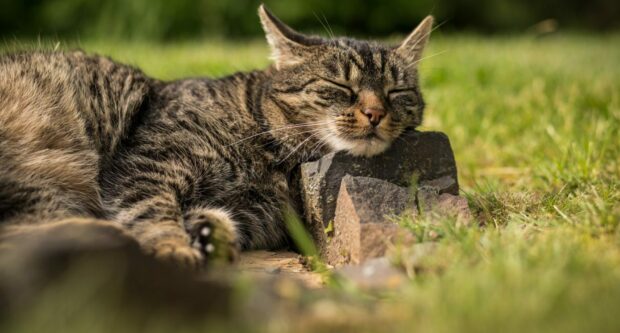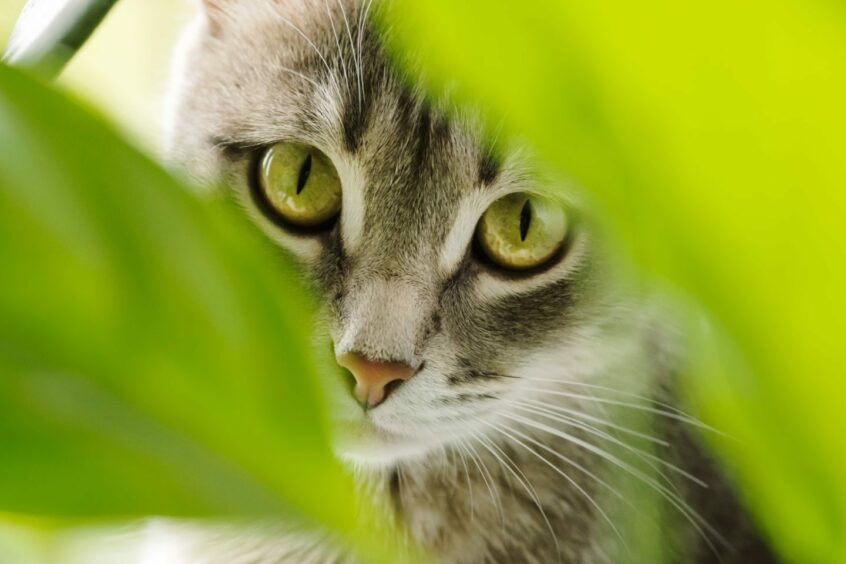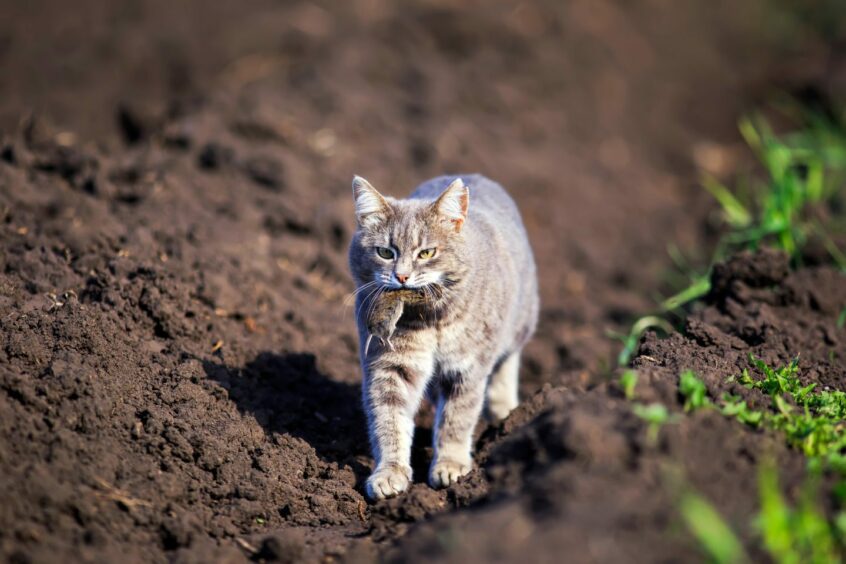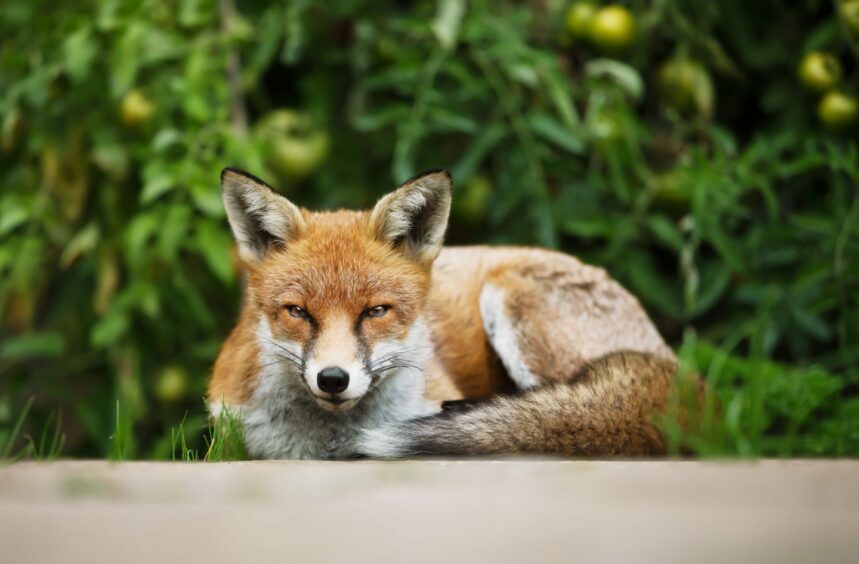Lately there’s been an unexpected visitor in the walled garden where I work at Scone Palace as head gardener, a lovely wee cat.
You’re probably wondering what’s so unusual about that as I’m sure many of you receive visits from a neighbour’s cat.
For us, although we’re not in the middle of nowhere, we’re a wee bit rural so a wandering kitty cat was not something I was expecting to see.
Cats at work…
It’s probably come from one of the occupants of the old estate cottages nearby, and it’s nice to see again here.
It would have been a familiar sight in this 200-year-old kitchen garden during Victorian times.
Back in the day, one solution to deal with vermin in the veg plot was the deployment of our feline friends.
The Journal of Horticulture described this in 1870 as ‘For catching and deterring in a kitchen garden, a good cat is worth it’s weight in silver’.
Through a carefully controlled diet of kitchen scraps it was hoped the cat would still be hungry enough to patrol the walled kitchen garden, looking to supplement its diet by keeping mice and birds at bay.
A mouse, if left at will, could devour newly-sown peas, beans and flowering bulbs like Crocus in no time. We wouldn’t know until a few weeks later when there was no sign of any emerging shoots.
Cats on a running wire
One way Victorian gardeners kept them at bay was to stretch an iron rod across the border, or up and down a line of strawberries, another favourite nibble of theirs.
With a shelter at each end for protection, the cat would be attached to the rod by a ring, allowing it to patrol up and down on the hunt, protecting the sown seeds from mice and scaring birds away from juicy strawberry fruits.
I’m quite sure the owner of our new garden visitor at Scone would have something to say if I was to make their family pet a working member of the gardens team.
And on the whole I reckon most of us prefer to see birds in our gardens so thankfully we can use a tightly-secured netting to protect our soft fruit plants instead.
A nod from history
I must say though, it is nice to see the cat around the place again, and feels like a nod of approval that the work we are doing to bring this part of these historic grounds back to life is going in the right direction.
Although here the gardener and cat work together as feline and friend to tend the garden, the relationship between us is not always so cordial.
Others see a cat as a nuisance. This is mostly down to their toilet habits after they scrape holes in the bare soil of our beds to bury their poo.
If this is an issue for you try keeping your soil moist as cats prefer a loose and dry soil, or soft mulch to do their business in. And why not!
My apologies, I didn’t intend for this weeks ramblings to be on such a foul subject but you cant help become a bit of an animal excrement expert when you are a gardener.
You never know, one day you might see me on Mastermind with my specialist subject being the deposits of cat, deer, rabbit, peacock and fox!
Then there’s Mr Fox
Foxes are intriguing. I first came across their mark in the garden when working in the rock garden of the Royal Botanic Garden in Edinburgh.
We didn’t see them too often but we could smell after they had been around.
I recall the red berries that protect the seeds of Arisaema plants were a particular favourite of theirs.
They were quite attractive to look at, but one day they would be there then the next not, having being eaten by the fox.
You can recognise that its fox dung as it will still contain the berries and is usually left in clear sight for us all to see.
As I’m sure you can imagine it’s not very pleasant when you’re not paying attention and come across one of these not-so-nice surprises.
But I can’t deny, the foxes did leave me with one of my favourite memories from this time.
A team of four of us looked after the rock garden. Boulders were positioned to create near-authentic mountain-top conditions, with narrow paths creating slopes and valleys.
We kept the area meticulously tidy using hand forks, going round the area in a loop.
It was like painting the Forth Rail bridge – once we thought we’d finished it was time to start again.
‘Ya cheeky wee imp’
There was a spell when a bit of mistrust developed between us as our gloves, jumpers and kneeling mats all seemed to disappear, each one of us accusing the other of hiding them.
I can still recall the morning I heard the cry: “Oi! Come back here with ma stuff ya cheeky wee imp!”
There was a fox casually trotting away with beanie hat in its mouth, being chased by the rest of my work mates.
Happy gardening days!




Conversation